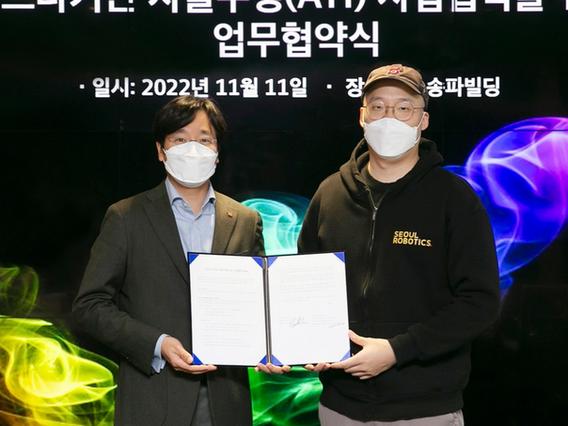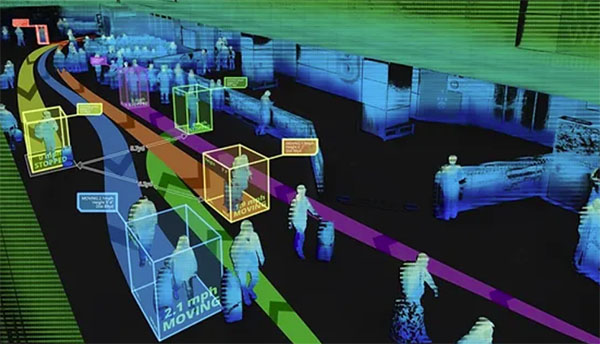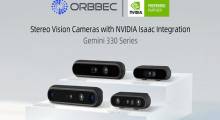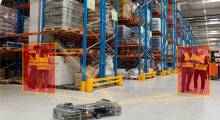The need for 3D perception is growing with fleets of mobile robots and autonomous vehicles. Seoul Robotics last week said it had doubled its revenue growth for the second year in a row and expanded employee headcount by more than 30% worldwide.
The South Korea-based company also said it has secured $25 million in Series B funding led by KB Investment as it brings its infrastructure-based systems to the global logistics industry. Seoul Robotics is exhibiting at CES 2023 in Las Vegas this week.
Founded in 2017, Seoul Robotics said its SENSR core technology is patented 3D perception software that uses deep learning and weather-filtering capabilities to provide accurate environmental insights. It added that its software delivers intelligence across industries, including transportation, security, smart cities, and autonomous mobility.
Seoul Robotics has offices in Seoul; Munich; Irvine, Calif.; and Raleigh, N.C., and is backed by leading global financial institutions.
Seoul Robotics scales deployments
Seoul Robotics said its “Autonomy Through Infrastructure” approach uses SENSR to provide infrastructure-based autonomous driving systems that do not require any hardware changes to vehicles themselves.
Over the course of 2022, Seoul Robotics added six partnerships with government entities and companies including global telecommunications leaders and Tier 1 automotive supplier Intelligent Transportation Systems. The company said it has scaled projects across six continents and expanded into new spaces such as airports, museums, stadiums, and aquariums.
In July of 2022, BMW announced that it had deployed Seoul Robotics’ Level 5 Control Tower (LV5 CTRL TWR) to automate finished-vehicle logistics on the new 7 Series production line at a vehicle plant in Germany. It said the tower made a historically manual process safer and more efficient.
LV5 CTRL TWR has received recognition including a CES Innovation Award, SupplyTech Breakthrough Awards, and a nomination in the BMW Group Supplier Innovation Awards. Seoul Robotics claimed that it was the first startup to to receive this distinction.
Partnerships provide power
Seoul Robotics last year continued to expand its offerings and collaborate with major industry partners to “harness the power of 3D perception.” Its has worked with AEye, and new partners included KT Telecom, NVIDIA Metropolis, FLOW, Digiflec, Agia, and Herzog.
In addition, the company offered the following:
- An infrastructure-based version of its SENSR-I software, which is placed on static infrastructure for both indoor and outdoor applications to deliver insights and expand AI across multiple industries.
- An automated obstacle-detection and warning system, Critical Asset Monitoring (CAM), equipped with Seoul Robotics’ SENSR-I and Herzog’s occupancy-detection platform to reduce railroad incidents.
- The intelligent traffic system (ITS) Wrong-Way Detection (WWD) product, integrated with MH Corbin’s customer reporting dashboard, that detects and alerts instances of wrong-way driving. It is engineered to be highly accurate, cost-effective, and easy to install, said Seoul Robotics.
“At Seoul Robotics, we believe that 3D vision has the power to transform industries across the board, not just for autonomous vehicles,” said HanBin Lee, co-founder and CEO of Seoul Robotics. “In 2022, our technology played a pivotal role in providing companies with the most accurate 3D data and perception solutions to create smarter, safer environments.”
“Looking ahead, we will continue driving widespread adoption of these solutions, democratizing access to 3D vision, so that any organization, anywhere can build toward a safer and more autonomous future,” he said.
In 2023, Seoul Robotics plans to extend the technology to additional applications, such as rental car fleets, ports, trucking yards and automated valet parking.

Sensor technology wins awards, exhibited at CES
In recognition of the company’s growth and success, Forbes named Seoul Robotics an Asia-Pacific startup on the rise in its “Asia 100 To Watch,” and the company was listed in the Korea AI Startup 100.
The World Economic Forum named Seoul Robotics as one of the “Technology Pioneers” for its contributions in the mobility and robotics space. The ASTORS Security Awards awarded the SENSR-I technology for “best perimeter protection.”
In addition, the company was named a finalist for the Tech.AD USA Awards, Security and Fire Excellence Awards 2022, AutoSens Awards, and Best of Sensors Awards.
At CES this week, Seoul Robotics plans to show its full suite of 3D systems and features at Booth 5408 in the West Hall at the Las Vegas Convention Center.
Article topics
Email Sign Up
















